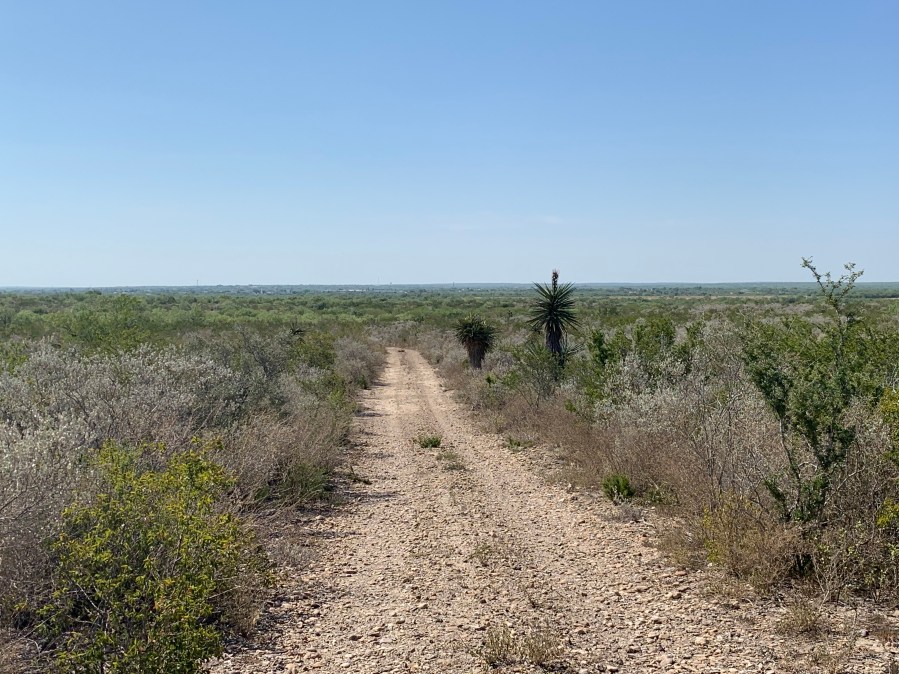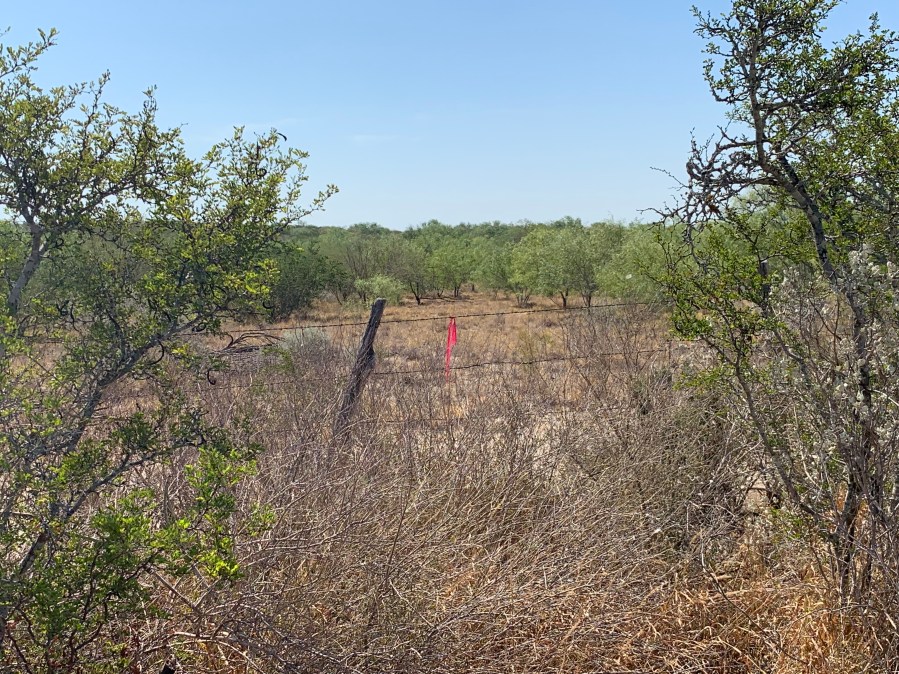ARROYO RAMIREZ WILDLIFE REFUGE TRACT, STARR COUNTY, Texas (BorderReport.com) — Deep in the heart of South Texas in a rural and hard-to-find wildlife refuge in western Starr County, the Trump Administration any day now is expected to begin construction on a border wall right through this little-known pre-historic area that up until now had been federally protected wildland.
The Arroyo Ramirez Wildlife Refuge Tract, a 668-acre parcel of land that is part of the Lower Rio Grande Valley National Wildlife Refuge, is teeming with jackrabbits, ocelots, fox and deer. Despite breathtaking vistas and vast spaces, the area is not readily marked on most maps, and the punishing climate and desolate terrain ensure that only the hardy survive.
The wildlife refuge is buffeted by private lands and hardly accessible to the public. There are no signs indicating its location. To get there, one must take an unmarked dirt road off of State Highway 650 west of the town of Roma, and try their luck to find it. Narrow dirt trails that may, or may not support a vehicle’s weight, meander southward along the Ramirez Creek watershed, for which the area is named.
It’s hard to imagine that this dry creek bed in this flood-prone flatland once was completely underwater. This area was forged during the Eocene Epoch, a geological period that lasted from 56 million to 33.9 million years ago, at a time when the Texas Gulf Coast was underwater. And embedded deep within its soil still remain the fossils from an extinct species of oysters that grew up to 20 inches in length.
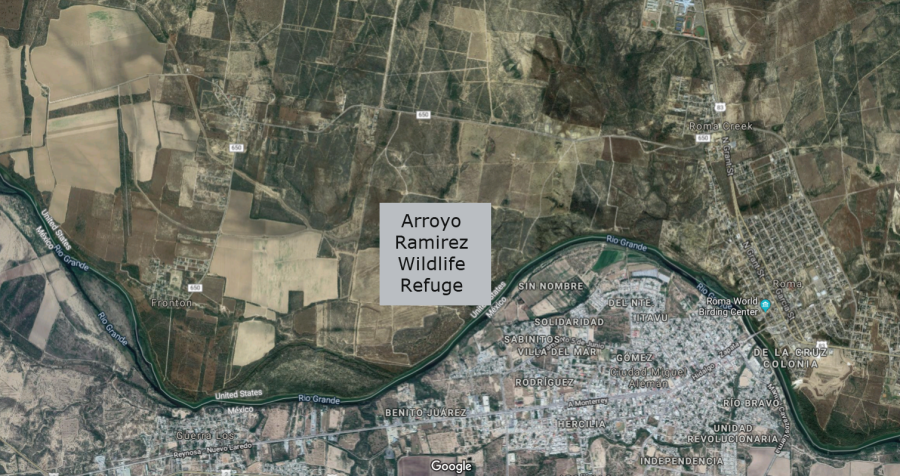
Environmental waivers granted
Up until now, these lands had been federally protected. But on July 1, a federal waiver was granted by the acting director of the Department of Homeland Security to allow construction of a border wall through this wildlife refuge, along with the Las Ruinas Tract of the Lower Rio Grande Valley National Wildlife Refuge. Because these lands are federally-owned the government won’t have to ask anyone’s permission to build here.
This waiver is pursuant to authority granted to the Secretary of Homeland Security by Congress and covers a variety of environmental, natural resource, and land management laws.”
U.S. Customs and Border Protection
Construction could begin in September, according to a news release by U.S. Customs and Border Protection.
“This waiver is pursuant to authority granted to the Secretary of Homeland Security by Congress and covers a variety of environmental, natural resource, and land management laws. Congress provided the Secretary of Homeland Security with a number of authorities necessary to carry out DHS’s border security mission,” the news release said.
Remote Starr County not getting national attention
Opponents of a border wall say that this unpopulated county — which numbered only 61,000 in the 2010 Census — is not getting the national attention that other parts of South Texas have gotten, and lands like this will likely soon be bulldozed because of a lack of public outcry.

When the Santa Ana National Wildlife Refuge in Alamo, Texas, in Hidalgo County, which is the neighboring county to the east, was slated for construction of a border wall, a number of lawmakers from across the country, as well as environmentalists and community leaders, spoke out against building the wall there. Marches and rallies were held against the construciton of wall through the 3.3-mile refuge. And former U.S. Rep. Beto O’Rourke, a Democrat from Texas who was challenging U.S. Sen. Ted Cruz, (R-Texas), for his Senate seat, even did a Facebook live while traipsing through the marshy area, which is a favorite among bird watchers.
As a result, Congress voted to exempt Santa Ana National Wildlife Refuge, along with a couple other areas in South Texas, including La Lomita Historical Park, Bentsen-Rio Grande State Park and the National Butterfly Center, from building a wall through those properties. (Read a Border Report story on the National Butterfly Center’s Reclaim the River day held Saturday, Aug. 17, and video interview with its executive director here).
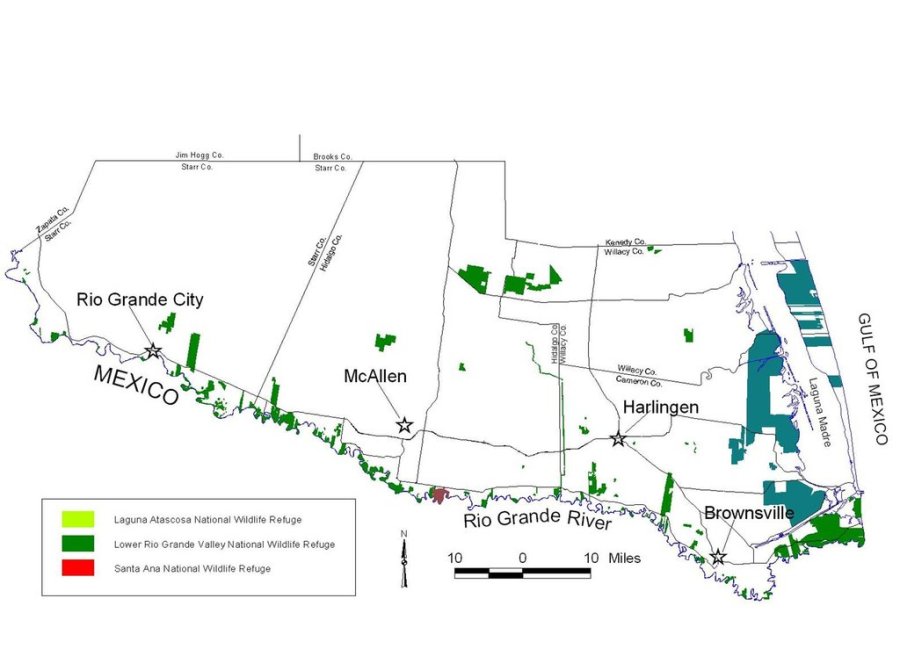
On Friday, Jonathan Salinas with the No Border Wall grassroots coalition, toured the area and even located a red marker affixed to a wire fence delineating the property line of the Arroyo Ramirez Wildlife Refuge. The marker is similar to other markers placed throughout the Rio Grande Valley and Salinas said it likely could indicate the border wall zone.
CBP has not specified exactly where the border wall will be placed, but on May 28 announced a $42 million contract was awarded to Kiewit Infrastructure West Company, of Omaha, Nebraska, to build three miles of border wall in this western part of Starr County. The project includes the construction of 18- to 30-foot high steel bollards, as as well as a 150-foot enforcement zone that includes lights, roads and other technology, according to a CBP news release.
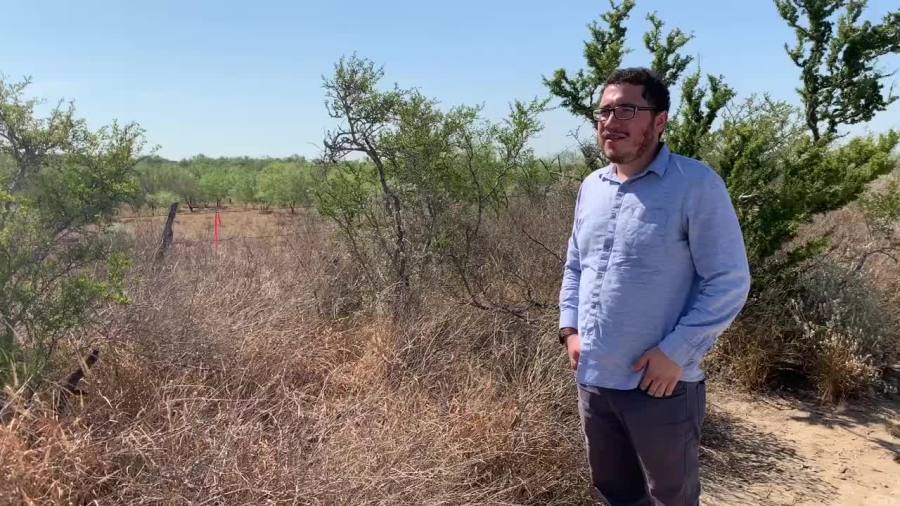
“The administration has issued waivers for this area for border wall construction,” Salinas said pointing to the red ribbon. “This would be the area where it would most likely start. This survey marker here would suggest we’re very near the targeted area of construction.”
Salinas and other environmentalists say building a wall through Starr County would be especially devastating to its land and people because this area is in a flood zone and lacks the earthen levees that its neighbor to the east, Hidalgo County, has erected throughout its border with Mexico.
Without these levees, they say, water will rush at unchecked speeds southward during heavy downpours and will backup and clog with debris at the border wall.
“Up until now, Starr County has not had any border walls … because those walls would be built in a flood plain. We’re standing right here in a flood plain where there are no levees. Wall construction built here would exacerbate flooding in Starr County,” Salinas said.
On Friday, temperatures topped out at 108 degrees in this dry scrub brush terrain. And with no nearby businesses or popular tourist attractions, Salinas says he fears that this area just has not gotten the same the kind of attention that could likely spare it from border wall construction.
Furthermore, he says that the federal government is in the process of consulting with community leaders throughout the Rio Grande Valley in all incorporated areas where a wall is slated to be built. They aren’t doing that in “no-man’s lands,” like these, he said.
“Barring the consultation areas, which are incorporated cities and county areas, construction could begin here quickly and there’s nobody to stop it,” Salinas said.
Sandra Sanchez can be reached at SSanchez@BorderReport.com.
